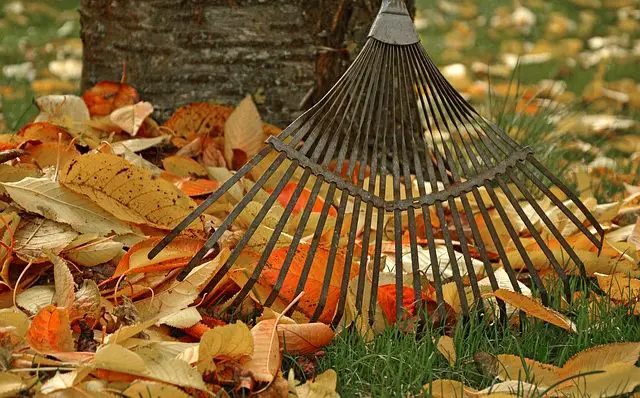The rake is one of the most commonly used tools when it comes to garden tools. But what is the purpose of a rake, and what are the different types? This blog post will answer those questions and more.
Contents
What is the use of a rake?
Answer: A rake is a gardening tool used to collect leaves, debris, or other objects from the ground. It has a long handle and a series of thin, tiled teeth that can be angled in different directions. There are many different rakes available on the market, each with its specific purpose.
Types of Rakes and their uses
We will explore the different types of rakes and discuss their specific uses.
- Garden rake: The garden rake, also known as the bow rake, is one of the most common rake types. A garden rake is suitable for doing different tasks, from raking rocks to leaves and acorns.
- Landscape rake – Landscaping rakes are arguably the best for landscaping projects. They have strong metal heads that are sturdy. They’re useful for soil leveling.
- Thatch rake – The thatch rake helps remove thatch from the lawn. One characteristic feature of a thatch rake is that it often has two-sided tines. A side of the tine is suitable for removing thatch, while the other side is for breaking up the thatch if it’s clumped up. The thatch rake is also referred to as a leaf or lawn rake since it can remove leaf debris from the lawn without damaging it.
- Concrete rake – The concrete rake is used by workers who handle concrete building tasks like building driveways, decks, walkways. Its distinctive feature is a two-way head where one side is textured, and the other is flat.
- Stone/gravel rake – The stone rake’s design allows you to rake items such as stones and gravel. It features sturdy tines that won’t break under the weight of the rocks.
- Hay rake – The hay rake isn’t a new tool for ranch owners. It’s suitable for raking and spreading hay around the farm. The hay rake shares similarities with the landscape rake.
- Shrub rake – The shrub rake is ideal for removing debris and dirt from places where the leaf rake cannot reach. Its distinctive feature is the smaller head and short tines that fit into tight corners.
- Hand rake – The hand rake is a small hand tool with two to three tines. Think of it as a hand trowel with tines. You can use the hand rake to rake small spots in front of you while you’re working on your garden.
- Roof rake – The roof rake is suitable for removing debris and snow from rooftops. Roofs can collapse with the weight of snow and other debris.
- Lake rakes – If you have a lake or a small water body on your property, the lake rake will ideally be suitable for removing debris from the surface of the water. Others refer to it as the pond/algae rake.
- Fire rake – Firemen mostly use the fire rake, and it’s suitable for use in wildfire-prone areas.
- Berry rake – The berry rake is suitable for gathering berries in the garden. Instead of picking the berries one by one, the berry rake scoops them into its tines, and when you pull the rake, the berries drop into its catcher.
- Leaf rake/scoop rake – The leaf rake’s design allows you to scoop leaf off your lawn quickly. You can use a thatch rake in place of the leaf rake and vice versa.
How do you choose the right rake for the job?
You should consider a few things when choosing the right rake for your job.
The first is its weight and material, which will determine how much effort it takes to move around and whether or not tight corners can easily accept this type of tool in question without too much difficulty. The material also plays an important role as metal rakes tend to outlive and perform better than their plastic counterparts.
Next comes size: Some folks might want something smaller while others prefer bigger tools that provide more leverage – whatever works best!).
Also, there’s the issue of adjustability and attachments to other tools and equipment. Can you attach the rake to a tractor, lawnmower, etc., when you want to rake a large portion of your property?
Finally, there’s a price range; some rakes are pricier than others. An expensive rake doesn’t mean you’ll have the best rake, nor does a cheap rake mean inferior.
These are a few factors that you should think about when purchasing a rake.
Wrapping up
Now that you know the different types of rakes and their purposes, it’s time to go out and buy one! Make sure to get a durable and comfortable rake. Happy raking!
- Best Ariens Snowblower: How to Сhoose the Right One For You - December 1, 2022
- Best Track Snowblower: How to Choose the Best? - November 29, 2022
- Kentucky Bluegrass vs Perennial Ryegrass - October 7, 2022



Add comment